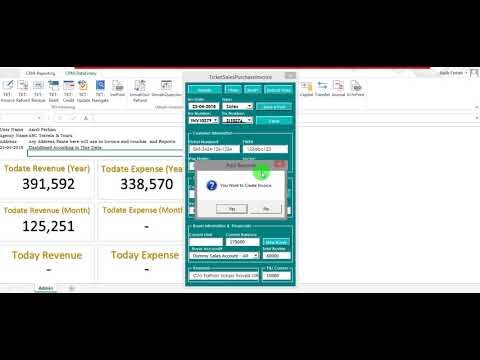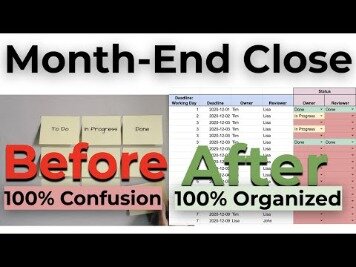
It also includes a hub to view all projects, making the correct labor costs, payroll, and expenses for each easy to manage. The QuickBooks Simple Start plan costs $30 per month and supports one user, making it best for very tiny businesses or for a single freelancer. Features include expense tracking, contact management, and unlimited invoices and estimates. Reporting abilities are limited, though a raft of third-party integrations are available (many cost a little extra, but some are free). Xero is an online accounting software tool that can work nicely for large businesses but that mainly targets small and midsize businesses. It helps businesses track expenses, manage invoicing, automate payments and manage inventory.
The cloud-based QuickBooks Online lets business owners manage accounting, accept online payments, manage and pay bills, and much more. FreshBooks can be a good option for freelancers and contractors looking for an affordable, simple accounting software. There’s time tracking in all plans and phone support is available from 8 a.m.
Xero is on a mission to rewire the global economy by connecting millions of businesses to their banks, advisors, and each other. Xero is often regarded as a viable QuickBooks alternative, typically favored by startups and small e-commerce businesses. With either solution, you can access your accounts anytime and anywhere.
It can be used to keep track of financial transactions, handle invoices, pay bills, create reports, and file taxes. This program will help you keep track of your customers, vendors, clients, inventory, and finances. The Accounting category in Xero is where you’ll handle all of your banking transactions, as well as manage your chart of accounts and financial statements.
Furthermore, both Xero and QuickBooks provide a free Mobile App for managing your accounting on the move, as well as several Third-Party Integration options. Having said that, you’ll need to know more about each software’s capabilities in order to determine which option is best for your company. QuickBooks Online offers integration with hundreds of apps, making it great for small business owners.
While Xero’s $13 Early plan is far cheaper than QuickBooks’ $30 Simple Start plan, it’s also very limited due to the caps on invoices and billing. A better comparison is the $55 QuickBooks Essentials plan (plus the $45 Core or $75 Premium payroll plans) vs. the $37 Xero Growing plan (paired with the $40 or $80 Gusto plan). Essentials supports just three users, while Growing is unlimited, making it better value for large or growing operations. Core offers the basics, while Premium adds same-day direct deposit, role-based access, and auto time tracking. Elite also adds tax penalty protection, and a dedicated pro to help set up and troubleshoot.
QuickBooks vs Xero: Customer Service & Support
Some businesses may rely on those features, however, particularly if they opt for top-down oversight that requires greater control. This is because QuickBooks offers an add-on specifically for time tracking, starting at $20 per month (plus $8 per user), while Xero bundles time tracking with its main service. Those looking for an all-in-one accounting and payroll system may find QuickBooks a suitable choice. However, QuickBooks Payroll’s pricing can be more expensive than Gusto’s (depending on the plan you choose and how many employees you have), and it takes a little more time to set up. Gusto’s basic plan also has more payroll and HR features than QuickBooks’, including health benefits, workers’ compensation administration, commuter benefits and more. If you can’t justify the $90-per-month QuickBooks Online Plus plan, you won’t get inventory management, because QuickBooks Online’s lower-tier plans don’t come with it.
In many aspects, Xero and QuickBooks Online are comparable in that they are both Web-Based Accounting Software Platforms with extensive feature sets, flexibility, and ease of use. The Contacts category lets you manage all contacts, from customers to suppliers to contractors, from one location. Reporting in Xero is solid, with a variety of financial statements and management reports available.

Its $70-per-month plan also includes multiple currencies, project tracking, in-depth analytics and employee expense claims. Users appreciate that Xero is easy to set up and use, with a simple and clean user interface along with intuitive features. Reviewers also praised the fixed assets manager and the project accounting capabilities. The software’s biggest drawback is its inability to reconcile transactions without bank feeds and its lack of live phone and chat support. Its simple and intuitive design combined with effective features make it an attractive option for many small businesses.
Xero vs QuickBooks: Pricing
Moreover, Xero’s tiered pricing incorporates a range of features that make it particularly suitable for growing businesses. Xero and QuickBooks are both great accounting software options for small businesses. They both offer a wide range of features, an easy-to-use interface and competitive pricing. Plans start at $13 per month for up to 20 invoices, five bills, bank account reconciliation, receipt capture and short-term cash flow snapshots.
QuickBooks tends to be more expensive than Xero, but QuickBooks offers an extensive feature list and comprehensive customer support. Plus, certain unique features like mileage tracking add to its value-for-money aspect. At an extremely low price and with solid functionality, it might be simply everything you need for your bare bones payroll processing needs.Xero is a favorite for businesses in startup mode. Because it works, it offers the basic functions you need, accountants know it and like it and it has the ability to scale with you as you ramp up your business.
Xero vs QuickBooks: Mobile Apps and Accessibility
Conversely, Xero offers its own impressive feature set, such as invoicing, project time tracking, inventory management, payroll processing, and bank connections. The standout feature of Xero is its unlimited user provision across all its plans. You can add as many team members or accountants to the system without incurring any additional costs.
- Both Xero and QuickBooks Online will send automatic payment reminders on past-due invoices.
- Just because one accounting program has more software integrations than another doesn’t mean it’s more functional.
- Xero’s compatibility with over 1,000 third-party apps puts it ahead of QuickBooks’ 750 apps, making it the clear winner on integrations.
- Xero’s mid-tier plan, called Growing, costs $30 per month and removes all usage restrictions without adding features.
This all-in-one accounting software is particularly popular with startups and younger business owners, and is known for its clean, uncluttered interface. Xero and QuickBooks Online are two of the most popular accounting software platforms. Here’s our comparison of their pros and cons How to Register Vehicles Purchased in Private Sales California DMV to help you decide between them. To get it, you’ll just need to log in, visit Xero Central, and submit a query. You can then track its progress through a section called “My cases,” which details which specialist is working on it, the current status, and expected response time.
It automates complex and time-consuming financial management tasks, promoting accuracy and efficiency. Good accounting software can help businesses track cash flow, view financial health, stay compliant with tax laws, and make informed business decisions based on accurate financial data. They’re both easy to set up and use, and many users report a low learning curve to get started. They also include the ability to create professional invoices quickly and easily, without employing a standalone invoicing software.
Scalability and suitability for different business sizes
When it comes to Xero vs. QuickBooks Online (QBO), one of the biggest differences is pricing. With Xero, you pay a flat monthly fee with three pricing packages to choose from. QuickBooks Time job scheduling is a game-changer when it comes to planning and setting multiple schedules on the go.
Here’s how each accounting software vendor breaks down their services, so you can see how they compare. You can add your logo to your invoice templates, and change the color to fit your business’s branding. And while the Advanced tier of QuickBooks offers 24/7 support through live chat, phone lines, and email, their other tiers only offer a live chat option. QuickBooks supports six custom invoice templates, and lets you track the status of the invoice with read receipts.
Quickfire round – Xero versus QuickBooks
Moving up to the more expensive plans will get you features such as inventory, custom user permissions, and accelerated invoicing, with all plans providing the basic functionality your business needs. The Online version has a monthly subscription charge, rather than a hefty upfront fee. It’s also cloud-based and designed for use on the move, so you can access it from your laptop, smartphone or other mobile device. Xero and QuickBooks Online are both user-friendly, streamlined and cloud-based. They both have an app, and pricing based on a monthly subscription model.
Ironically, we don’t recommend this plan to freelancers due to its lack of tools, even though we do recommend QuickBooks as the best accounting software for the self-employed. Xero and QuickBooks are two the of most popular accounting software solutions for small businesses looking to keep track of finances. While the two both offer similar features, such as tax management, financial reports, integrated payroll, inventory and file storage, the two are not without their differences.
